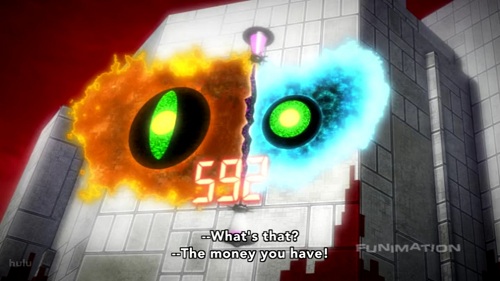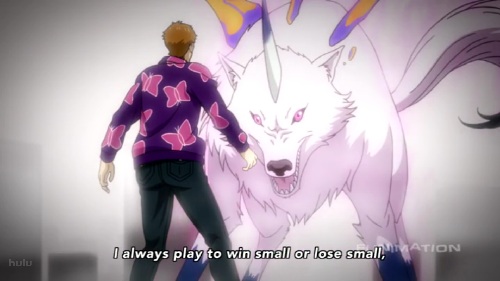
Welcome to the Financial District

2 responses to “Welcome to the Financial District”
-
I often feel, as I watch C that it and anime like Eden of the East are almost like open sores on an ill person – the tip of the iceberg, so to speak. So to me, I don’t really reel at the idea of two anime treading the same ground – they handle the situation from two very different slants (humanistic for EoE, situational for C) and seem to be attempting to say different things. To me, this is just underscoring the idea that something is very wrong in the rising sun.
I remember the first university-level art class I took. I wasn’t putting enough charcoal on the page, and my T.A. asked why. I told him it was because both the paper and the charcoal, two of the cheapest art supplies, were expensive, so I didn’t want to waste them. To which he said: “You will find that art is often a wasteful thing.”
I find it fascinating when a country is under a pressure which has essentially cracked its base
That said, don’t go painting a picture of Japan as ‘down and out’. Note the vast amounts of money in play in the world of C. This is no bankrupt nation, simply one in a slow period. Much like the UK, they still sit on vast amounts of wealth, even if they aren’t considered as much of a ‘world power’ perhaps as they were 20 years ago. This is a country where true poverty is hard to find, and whose people can afford to buy high-quality goods at high prices.
An interesting note here is the somewhat hidden slant towards a younger audience. Though it airs in the Noitamina block at 1am, the content and execution of the Financial District is ultimately childish – the Yu-gi-oh meets the stock market comparison has been made elsewhere, so I’ll spare you. A huge issue which has arisen in Japan is the disparity in ideals, culture and wealth between the youth and the older generations.
The other interesting note to make here is to contrast it to the other quite lovely Noitamina show airing currently – Ano Mita Hana no Namae wo Bokutachi wa Mada Shiranai. Ano Hana presents an obstinately idyllic version of Japan and Japanese youth culture, all while cloaking that same issue of the hikkikomori, or the alienated youth.
Anyways. I think I’ve said my bit 🙂 -
I think the issue Japan is (and arguably should be) most worried about is not the present but the future. Right now they have a lot of money but their trajectory is pointed downward. Of course, they are in good company, most other developed country is also on a downward trajectory. The difference with Japan is that there problems predate the global recession. So the US, for example, may experience the same issues that Japan but likely not as soon.
Your point about the slant towards younger audiences is really interesting, I wonder how a 13 year old would review the show.


Leave a Reply